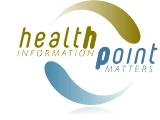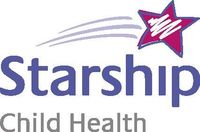Level 4
Starship Children's Health
2 Park Road
Grafton
Auckland

Starship Paediatric Spine Service

Street Address
Postal Address
Department of Orthopaedics
Private Bag 92024
Auckland Mail Centre
Auckland 1142
Contact Details
Outpatient appointments:
(09) 367 0000 ext 22492
Surgical booking enquiries:
(09) 367 0000 ext 22494
Nurse Specialist - Paediatric Spine
021938148
GP/External Specialist Help Desk: (09) 3072800
All referrals to Starship Paediatric Spine must be done through your family doctor or specialist. If you live outside the Auckland region, referrals must come via your local hospital.
Website
Torticollis
About 1 in 200 babies have torticollis, a shortening of a muscle in the neck causing their head to tilt to one side. The muscle affected is called the sterno-cleido-mastoid muscle (SCM), and it goes from the sternum (breast bone) to the skull just behind the ear. 'Torticollis' means twisted neck, and 'congenital' means that it is present at birth. Torticollis can be due to congenital defects, trauma, inflammation, tumours, and neurological or other factors.
Congenital Torticollis
Usually torticollis is picked up several weeks after birth when it is noticed that the baby's head is usually turned to one side, and it is difficult to turn his head to the other side. The baby's head is usually tilted so that he will look up as well as to the side. This tilt is due to the shortened muscle on the opposite side of the neck. The muscle feels tight, and there can be a small swelling in the middle of the muscle. Most commonly the muscle on one side of the neck is shorter than the one on the other side because the baby's head was held in a twisted position in the womb before birth. For some babies, there may have been an injury to the muscle during birth. As the injury heals, scar tissue develops which makes the muscle tighter. A baby can develop muscle shortening if the head is turned to the same side most of the time, eg. for sleeping. This is not a congenital torticollis, but treatment is the same. Rarely torticollis can also be caused by congenital abnormalities of the cervical spine, so sometimes x-rays or a CT scan are required. About 20% of babies with congenital torticollis also have abnormal development of the hip (developmental dysplasia of the hip) or feet which are twisted (talipes). Congenital muscular torticollis is usually painless.
What is the treatment for congenital torticollis?
Congenital muscular torticollis usually improves with range of motion and stretching exercises and massage, but it can lead to positional plagiocephaly (flattened skull) and facial asymmetry if your child's head lies in the same position all of the time. If it isn't quickly improving, then your child may need to be evaluated by a physical therapist. The muscle is passively (and gently) stretched by turning the baby's head so that the chin is moved towards the affected side. 'Passive' means that the stretching is done by a parent or someone else, not the baby. A physiotherapist or your doctor will be able to show you how to do this. The baby can also be encouraged to stretch her muscle (active stretching) by putting things that she will be interested in looking at on her unaffected side. Usually there will be improvement within 2 to 3 months and the baby will be able to move her neck fully in less than 12 months. In cases that aren't improving by 12-18 months, a surgical release/lengthening of the sternocleidomastoid muscle may be required.
Acute Torticollis
Torticollis can also come on suddenly in children and adults due to spasm in the SCM muscle. Usually this is due to a small injury caused by sudden movement, or sometimes by an infection in the neck or damage to the bones. Any neck pain that comes on suddenly needs to be checked by a doctor.
https://healthpoint.co.nz/public/spinal/starship-paediatric-spine-service/